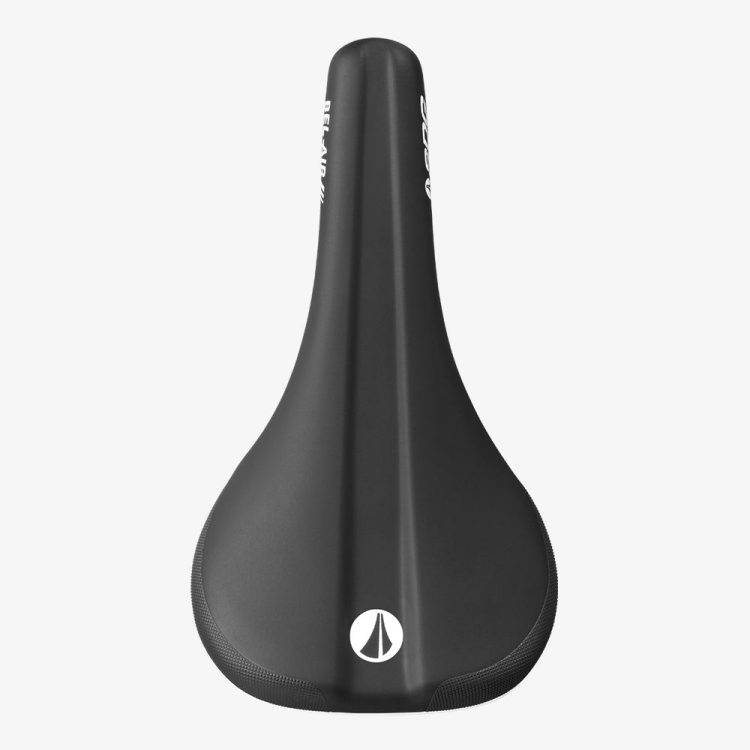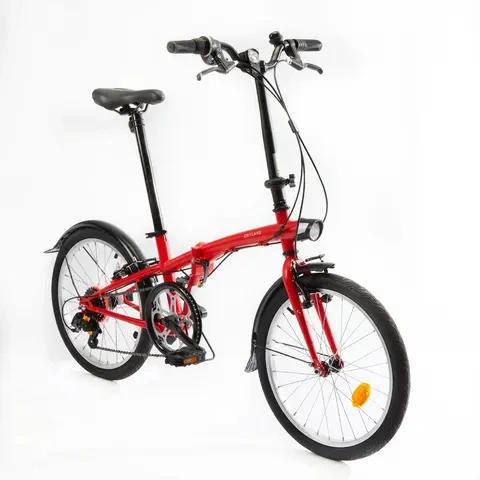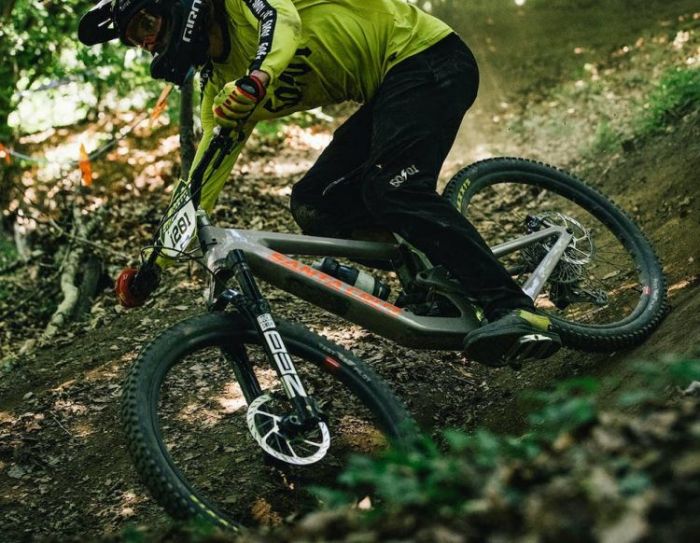In addition to some of the brands’ technological additions, for riding comfort and the challenge of looking at more professional terrain. Droppers have become increasingly inseparable for riders, as evidenced by the fact that even entry-level mountain bikes are equipped with dropper options. And as XC riding and racing become more aggressive, the pros are happy to use them.
From easier replacements to help your daily riding or upgrades with better features and lighter weight to help with racing. Or for riders with height restrictions, dropper tubes to better help them descend or stop better.
Since droppers are so popular, we need to know why mountain bikers use dropper seat posts?
When a mountain biker rides a steep downhill section, reverts to the saddle that seems to have been left cold for a long time. This allows him to shift his weight to the body for more stability.
Of course, the dropper post isn’t just there to get assistance on the descent. A tap on the remote lever will pop your saddle back up to the correct height for efficient pedaling.
So when we use the dropper frequently, do we think about how the dropper works?
The dropper seat lever works in a very similar way to your office chair. Again, you need to put your weight on the dropper post and push the lever, and the seat will drop. Lift your weight off the post and push the lever and the seat will return to its original position. Of course, the technology behind the inner workings of the dropper is more complex than that.
The dropper used in general for mountain bikes is usually pneumatic inside. This means that pressurized gas or air is responsible for keeping the seat post in its fixed or infinitely variable position.
It is interesting to note that in the traditional dripper design, the drip post was adjusted with its lever. Today, however, the drip post is operated almost entirely by a remote lever mounted on the handlebars and is attached to the top or bottom of the pole by a mechanical cable or hydraulic hose.
How Many Trips Do I Need?-For Dropper Selection
Stroke is the degree to which the riser slides up and down, and the rider needs to generate a sufficiently easy amount of control through this momentum.
The cheaper droppers usually travel less. The longer the trip, the more powerful and precise the internal mechanism must be.
We were able to see a shorter 100mm of travel on some XC models. This value is the starting point for most dropper posts. It is on such a drop amount that we make a noticeable difference when riding.
However, it is undeniable that longer travel posts are found to be better for maximizing clearance while maintaining proper seated pedal height. A typical drop is about 125 mm to 170 mm of travel, which works well for most riders.
Longer stroke columns do of course exist, from 170 mm to 210 mm.
But a longer stroke would have many limitations, such as the height of the rider or the model of some bikes. So we can’t just choose the dropper with the largest stroke value.
If you need to measure this value accurately, compare the distance from your existing seat post from the saddle rail to the top of the seat. Then compare this to the length of the seat post from the saddle rail to the bottom of the seat. Try to reach a value that matches.
The difference between mechanical and hydraulic-For Dropper Selection
For some novices, most drip seat levers are labeled with hydraulic and mechanical attachment information. It can cause some confusion, but the heart of the matter is really how to connect the remote lever to control it.
A rare and expensive fully hydraulic dripper uses a sealed hydraulic remote control to control the seat post.
The system itself works very similarly to a hydraulic brake, with a piston (lever) pushing fluid through a hose, which drives a drip line at the other end. The advantage of the hydraulic cable is that there is no cable wear, and the hose can be passed through any angle without increasing friction.
In post-maintenance, you need to replenish fresh hydraulic fluid instantly, which is also a significant expense for your wallet. Of course, it’s only a few brands that use fully hydraulic seat posts, such as RockShox.
In contrast, the other, more widely used and largely market-accepted mechanical lever, is based on the principle of connecting to a gear cable for control.
Use a braided stainless steel cable that runs through the gearbox and connects to the drip post.
Its main advantage is that they are simpler and easier to set up than hydraulic levers.
Internal (invisible) and external cable routing-For Dropper Selection
As with modern bike designs, the hoses for the brakes and gears can be internally wired, and the lift seat post can be wired with this technology. Internal cable routing means that the dropper post connects to the remote lever at the bar shaft.
There are many benefits to internal cable routing. These include a cleaner overall, less risk of dirt or exposed hoses, and even less chance of damage in the event of a collision.
The much less common external cable wiring is more common on some affordable models. The advantages of external cabling are also straightforward: easy installation and easy maintenance. All that is required is to attach the cable to the frame and plug it into the bar post normally. This is often used for some older or entry-level mountain bikes.
Seatpost Diameter-For Dropper Selection
Lift seat bars are available in a variety of different diameters. The most common options are 30.9 mm, and 31.6 mm, but some models are also available with a thinner 27.2 mm receiver bar.
If you need to upgrade your dropper, then the size of the frame needs to be checked carefully. This is of primary importance. Generally larger diameter seat posts are considered to be more robust and able to handle more demanding terrain. For example, rock gardens for endurance traverse. So in the existing trend, more and more mountain bikes are choosing to increase the seat post diameter to achieve further upgrade optimization.
If you need to know more, please click on the link below.



About Dropper Prices
200 USD and below
In the frame of this price, you will feel that his weight will be heavier than the average drip tube residence. This is because he will be simpler and more primitive in terms of internal structure and materials used. And only basic in function, the appearance of the more technical external alignment is rarely used.
$200 – $350
This is a watershed moment, and beyond the $200 threshold, we will see technology add to the dropper. The internal structure and internal wiring begin to be enhanced, the combination of features allows for a lighter-weight product, and efforts have been made in terms of durability.
$350 – $500
Whether it’s most rider recommendations or what’s on the market, you’ll find the most droppers in this range. And this price is actually near the top end of the market. For example, improved seals allow for a smoother drive, lower leverage, and greater durability.
And a lighter material has been chosen for the material. So you will find that when comparing the dropper data under $200, the products in this price range will be lighter, approximately reducing the weight by >100g.
More than $500
This is the full top-flow dropper now, and you can enjoy a professional-grade product with advanced pneumatic and suspension technology. The shaft on the inside may have a special coating to help drive more smoothly. This design also allows for longer life and more weight drop.
Maintenance and Services
Riders demand a lot from their dropper seat posts. Similar to suspension components, a dropper seat post will be subjected to constant forces. Therefore it is important to properly maintain your seat post so that it works as intended.
For the rider, the lift seat post will be subjected to more force and used very often, so it needs to be carefully and properly maintained. Due to the technical characteristics, a fixed pressurized gas or hydraulic oil is required to perform efficiently. And debris must be carefully cleaned. So an annual inspection is essential.
Two problems are often encountered in the process of use. The first one is that the exhaust is not smoothly exported to extend the stroke slowly. The second is that the bolts holding the seat post are tightened too much, causing compression inside the drip tube.
When you find noise in the process of use, or find a seal leak, you must repair it in time. But this process requires a professional, as it requires more technicality. I would not recommend little experienced riders to handle the trouble themselves, the process requires careful wrapping to prevent his smooth surface from being scratched.
You can also go to a professional offline store for some maintenance services, such as replacing seals, pressurizing internal air, or replenishing hydraulic oil.
In case, the above comments are helpful to you, please remember to share the subscription. Have a great day!

![[Orbea URRUN 10 20mph Review] – Best Used By People Who Enjoy Riding To Get AFeel For The Mountains!](https://bestbikeselect.com/wp-content/uploads/2023/09/2023-Orbea-URRUN-10-20mph-35_-1024x1024.jpg)
![[Specialized Turbo Como 5.0 Review] – Good Choice?](https://bestbikeselect.com/wp-content/uploads/2023/08/2023-Specialized-Turbo-Como-5.01_-1024x1024.webp)



![2025 Built for Champions:[Orbea ORCA M21eTEAM PWR Review]](https://bestbikeselect.com/wp-content/uploads/2025/01/ORCA-M21eTEAM-PWR-1024x885.jpg)
![2025 Conquer Any Trail [Santa Cruz Bronson R Review]](https://bestbikeselect.com/wp-content/uploads/2025/01/Santa-Cruz-Bronson-R-1-1024x768.webp)
![2025 The All-Terrain Beast [Santa Cruz Hightower 3 MY24 Review]](https://bestbikeselect.com/wp-content/uploads/2025/01/Santa-Cruz-Hightower-3-MY24-1024x768.webp)
![The Best Comfortable Leisure Bike of 2025 [ Trek Verve 2 Lowstep Gen 5 ]](https://bestbikeselect.com/wp-content/uploads/2024/12/Verve-2-Lowstep-Gen-5-02-1024x681.png)
![2025’s Top Endurance Bikes [Cannondale Synapse Carbon 3 L Review]](https://bestbikeselect.com/wp-content/uploads/2025/01/Cannondale-Synapse-Carbon-3-L-1-1024x627.webp)
